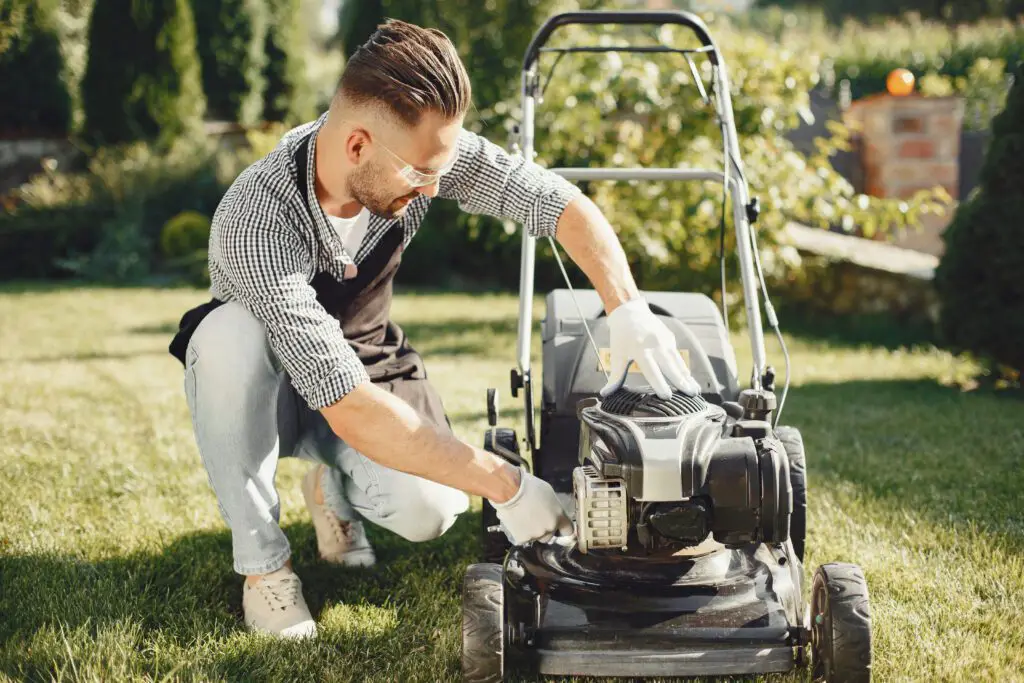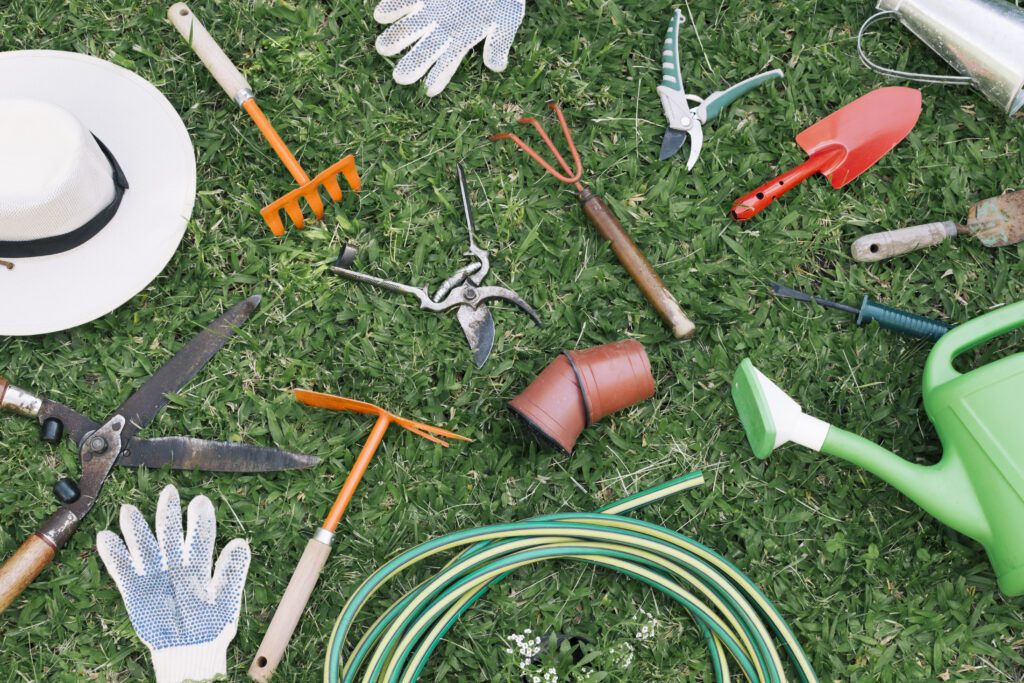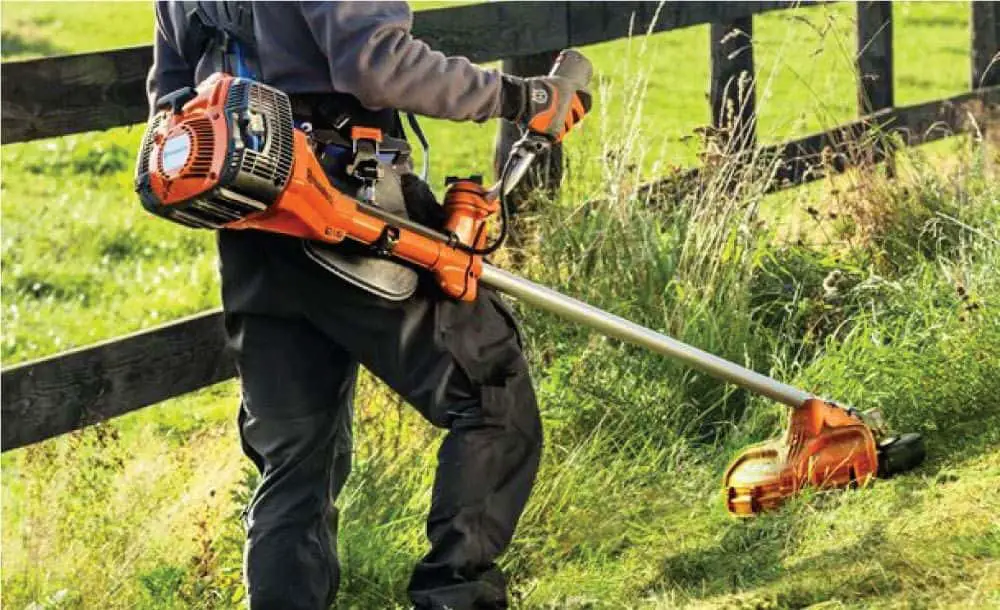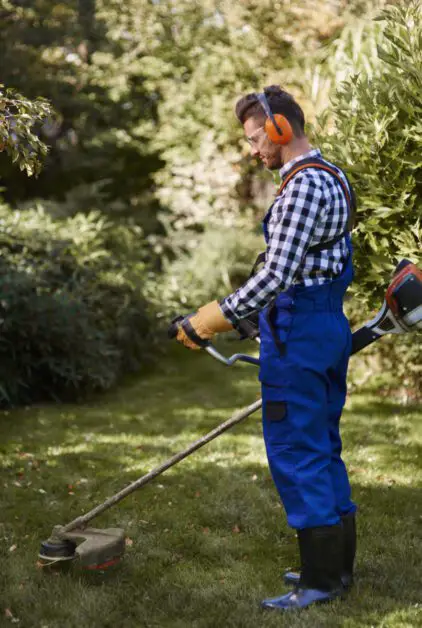How to Clean and Maintain Your Trimming Machine for Optimal Performance
Table of Contents
Understanding the Importance of Cleaning and Maintenance for Trimming Machines
Trimming machines play a crucial role in the efficiency and productivity of gardening and horticulture operations. However, the importance of regular cleaning and maintenance for these machines should not be overlooked. Proper cleaning and maintenance not only ensure optimal performance and longevity but also promote safety in the workplace.
Cleaning and maintenance help remove dirt, debris, and residue that can accumulate on the trimming machine’s exterior surfaces and components. This buildup can not only impede the machine’s functionality but also compromise its hygiene. Regular cleaning prevents the growth of bacteria or fungi that can contaminate the plants being trimmed, ensuring a clean and healthy environment for cultivation. Additionally, the maintenance process allows for the inspection of various components of the trimming machine, detecting any signs of wear, damage, or malfunction that may require immediate attention.

By devoting time and effort to cleaning and maintenance, gardening enthusiasts can enhance the overall performance and durability of their trimming machines. Whether it’s cleaning the exterior surfaces or lubricating the moving parts, each step contributes to the smooth functioning of the machine. So, let’s delve into the key components that require regular maintenance and the steps involved in cleaning and maintaining a trimming machine for optimal results.
Identifying the Key Components of a Trimming Machine that Require Regular Maintenance
Regular maintenance is vital to ensure the smooth operation and longevity of a trimming machine. By understanding the key components that require attention, you can effectively maintain your equipment and prevent costly breakdowns. One essential component that necessitates regular maintenance is the cutting blade or mechanism. The sharpness and alignment of the blades directly affect the quality and efficiency of the trimming process. Regular inspection and sharpening or replacement of dull or damaged blades are necessary to maintain optimal performance.
Alongside the cutting mechanism, the collection system of a trimming machine is another critical component that requires regular maintenance. This system is responsible for gathering and removing trimmed material, ensuring a clean and efficient trimming process. However, over time, debris and residue can accumulate, impeding the machine’s performance. Therefore, it is essential to clear and remove any blockages or build-up within the collection system, allowing for proper airflow and effective waste removal.

By prioritizing these key components, namely the cutting mechanism and collection system, in your regular maintenance routine, you can ensure the continued efficiency and longevity of your trimming machine. Neglecting these key areas may lead to subpar results, increased downtime, and ultimately, reduced productivity. A proactive approach to maintenance will not only save you time and money in the long run but also contribute to better overall trimming outcomes.
Trimming Machine
Before beginning the cleaning and maintenance process for your trimming machine, it is crucial to properly prepare the equipment. This step ensures that the machine is safe to work on and helps maximize the effectiveness of the cleaning and maintenance tasks.

To start, make sure the machine is turned off and unplugged from the power source. This prevents any accidents or injuries while you are cleaning and inspecting the various components. Additionally, it is recommended to wear personal protective equipment, such as gloves and safety glasses, to protect yourself from any potential hazards.
Next, carefully remove any debris or plant matter that may have accumulated on the machine. This can be done by using a brush or a soft cloth to gently wipe away any loose dirt or residue. Pay close attention to the blades or cutting mechanism, as these areas tend to gather the most debris during use. By removing this initial layer of dirt, you can ensure more thorough cleaning and reduce the risk of damage to the machine during maintenance.
Selecting the Right Cleaning Agents and Tools for Your Trimming Machine
When it comes to selecting the right cleaning agents and tools for your trimming machine, it’s essential to choose products that are effective yet gentle on the machine’s components. Using harsh chemicals or abrasive tools can cause damage and reduce the lifespan of your equipment. Therefore, it’s crucial to opt for cleaning agents that are specifically designed for trimming machines or similar equipment.
Look for cleaning agents that are labeled as safe for use on sensitive surfaces and are environmentally friendly. Avoid using bleach or strong solvents, as they can corrode metal parts and degrade plastic components. Instead, consider mild detergents or specialized cleaning solutions that are specifically formulated for removing plant residue and maintaining the integrity of the machine.
In terms of tools, it’s important to select those that won’t scratch or damage the surfaces of your trimming machine. Soft bristle brushes or microfiber cloths are ideal for gently removing dirt and debris. Avoid using wire brushes or abrasive scrubbing pads, as they can scratch the machine’s exterior and compromise its performance. Additionally, make sure to have a variety of sizes and shapes of brushes and cloth to reach all the nooks and crannies of your trimming machine effectively.
Step-by-Step Guide to Cleaning the Exterior Surfaces of Your Trimming Machine
Cleaning the exterior surfaces of your trimming machine is an important step in maintaining its overall performance and longevity. Regular cleaning not only helps to remove dirt, debris, and residue but also prevents the buildup of grime that can hinder the machine’s functionality. To ensure that your trimming machine remains in top shape, follow this step-by-step guide to cleaning its exterior surfaces.
1. Start by disconnecting the machine from its power source to ensure safety during the cleaning process. Use a soft brush or cloth to gently remove any loose dirt or debris from the surface of the machine.
2. Prepare a mixture of mild detergent and water in a bucket. Dip a clean cloth or sponge into the soapy water and wring out any excess liquid. Wipe down the exterior surfaces of the trimming machine, paying close attention to areas that are prone to buildup, such as the cutting deck and handlebars.
Remember, keeping the exterior of your trimming machine clean not only enhances its appearance but also helps maintain its functionality. By following this simple step-by-step guide, you can ensure that your machine is always ready to tackle your trimming tasks with ease.
Ensuring Proper Cleaning of the Blades or Cutting Mechanism of Your Trimming Machine
Properly cleaning the blades or cutting mechanism of your trimming machine is essential for maintaining its performance and longevity. Over time, residue from plant matter can build up on the blades, leading to reduced efficiency and potential damage. To ensure optimal cleanliness, it is recommended to follow these steps:
1. Begin by disconnecting the power source and wearing protective gloves. This will protect you from any potential injuries and ensure your safety throughout the cleaning process.
2. Use a soft brush or cloth to remove any loose debris or residue on the blades. Make sure to cover all areas, including the edges and crevices, to ensure a thorough clean.
Remember, the blades are delicate and should be handled with care. Avoid using abrasive materials or excessive force, as this can result in damage to the cutting mechanism.
3. For more stubborn residue, such as sap or resin, use a mild cleaning agent specifically designed for trimming machines. Apply the cleaning agent onto a cloth or sponge and gently scrub the affected areas. Be cautious not to saturate the blades with excessive liquid, as this can lead to rust or other damage.
Regularly inspecting and cleaning the blades of your trimming machine will help maintain its performance, ensuring a precise and efficient trimming process. By following these steps, you can enhance the lifespan of your equipment and achieve optimal results in your gardening endeavors.
Clearing and Removing Residue or Debris from the Trimming Machine’s Collection System
To ensure optimal performance and longevity of your trimming machine, it is crucial to regularly clean and remove residue or debris from its collection system. Over time, the accumulation of trimmings, plant matter, and other debris can impede the proper functioning of the machine, leading to decreased efficiency and potential damage to the equipment.
To begin the process of clearing and removing residue or debris, first, make sure to disconnect the machine from its power source to prevent any accidental activation. Then, carefully open the collection system, following the manufacturer’s instructions. Using a soft brush or a compressed air duster, gently dislodge any loose trimmings or debris from the interior walls and corners of the collection system. Take caution not to apply excessive force to avoid damaging any delicate components.
After clearing the loose debris, it is advisable to use a vacuum with a HEPA filter to thoroughly remove any remaining residue. A vacuum with good suction power will effectively suck up finer particles and ensure the cleanliness of the collection system. Be sure to pay special attention to hard-to-reach areas, such as the collection screen or mesh, as this is where most trapped debris tends to accumulate. By maintaining a clean collection system free from debris, you can maximize the efficiency and reliability of your trimming machine, ultimately resulting in higher-quality trim and improved overall performance.
Lubrication and Maintenance of Moving Parts in Your Trimming Machine
Regular lubrication and maintenance of the moving parts in your trimming machine are crucial to ensure optimal performance and prolong its lifespan. The moving components, such as the gears, bearings, and blades, are subject to friction and wear during operation. Without proper lubrication, these parts can become damaged or seized, leading to malfunctioning and decreased efficiency.
| Moving Part | Lubrication | Maintenance |
|---|---|---|
| Blades | Apply machine oil regularly | Check for sharpness and alignment, replace if needed |
| Bearings | Grease every 3 months or as recommended | Inspect for wear, clean, and replace if necessary |
| Motor | Follow manufacturer’s guidelines | Keep the motor area clean, check for any abnormalities |
| Belts and Chains | Lubricate with appropriate lubricant | Check tension, alignment, and replace if worn |
| Guides and Rails | Use dry lubricant or silicone spray | Wipe clean and ensure proper alignment |
To begin the lubrication process, refer to your trimming machine’s user manual for guidance on the recommended lubricant type and quantity. Typically, a high-quality lubricating oil or grease suitable for the specific parts of your trimming machine is used. Before applying the lubricant, it’s essential to clean the parts thoroughly to remove any dirt, debris, or old lubricant residue. This ensures that the lubricant can effectively reach all the necessary areas and prevent contaminants from causing damage or hindering the machine’s performance. Once cleaned, apply the lubricant as directed, making sure to reach all the moving parts that require lubrication. Remember to follow the manufacturer’s instructions to achieve the optimum lubrication level without over-applying the lubricant, as excess lubrication can attract more debris and cause issues in the long run. In addition to lubrication, regular maintenance checks should be performed to inspect and tighten any loose connections or bolts, replace worn-out components, and ensure overall smooth operation. By incorporating lubrication and maintenance into your trimming machine care routine, you can maximize its efficiency and minimize the risk of breakdowns or costly repairs.
Calibrating and Adjusting the Settings of Your Trimming Machine for Optimal Performance
To achieve optimal performance from your trimming machine, it is crucial to calibrate and adjust its settings accurately. Proper calibration ensures that the machine operates at the desired speed, precision, and efficiency, allowing you to achieve the best results for your trimming needs.
Start by consulting the manufacturer’s manual or guidelines for your specific trimming machine model. This invaluable resource provides step-by-step instructions on how to calibrate and adjust various settings, such as blade speed, cutting height, and feed rate. Carefully follow these instructions to ensure you make the correct adjustments.
In addition to the manual, consider conducting regular performance checks and assessments to identify any deviations from the desired settings. This proactive approach allows you to fine-tune the machine’s performance, ensuring consistent and high-quality trimming. Keep in mind that over time, factors such as wear and tear or environmental changes may require readjustment of the settings. By regularly evaluating and calibrating your trimming machine, you can address any issues promptly and maintain optimal performance.
Troubleshooting Common Issues with Trimming Machines and Their Maintenance
Trimming machines are an essential tool for maintaining the health and appearance of your plants. However, like any piece of equipment, they can encounter issues that require troubleshooting. One common problem is the blades becoming dull or misaligned, resulting in subpar trimming performance. To address this, it is important to regularly inspect the blades and ensure they are sharp and properly positioned. If necessary, sharpen the blades or realign them according to the manufacturer’s instructions. This will help maintain the efficiency and effectiveness of your trimming machine.
Another issue that can arise is the collection system becoming clogged or inefficient. This can happen when excess plant material or debris builds up in the collection chamber, hindering the machine’s ability to gather trimmings efficiently. To troubleshoot this, you should regularly clear out any residue or debris from the collection system. This can be done by emptying the chamber and using a brush or compressed air to remove any trapped particles. Additionally, inspect the collection system for any signs of damage or blockage and address them promptly. By addressing these common issues, you can ensure that your trimming machine continues to work optimally and provide you with the precision and consistency you require in your gardening endeavors.
Regular Inspections and Assessments of Your Trimming Machine for Early Detection of Problems
Regular inspections and assessments are vital for maintaining the optimal performance of your trimming machine and detecting any underlying problems early on. By incorporating these proactive measures into your maintenance routine, you can ensure that your machine operates efficiently and extends its lifespan.
During regular inspections, carefully examine all the components of your trimming machine, paying close attention to areas that are prone to wear and tear. Inspect the cutting blades or mechanism for any signs of damage, such as dullness, chipping, or rust. Additionally, inspect the collection system for clogs or obstructions that may affect its functionality. By inspecting these key components, you can identify any issues that may arise and take prompt action to address them.
Creating a Cleaning and Maintenance Schedule to Keep Your Trimming Machine in Top Shape
When it comes to keeping your trimming machine in top shape, creating a cleaning and maintenance schedule is essential. By establishing a routine for maintaining your equipment, you can ensure its longevity and optimal performance. Here are some key considerations for creating an effective cleaning and maintenance schedule for your trimming machine.
Firstly, it’s important to determine the frequency of cleaning and maintenance tasks based on your machine’s usage and the manufacturer’s recommendations. Factors such as the types of plants being trimmed, the volume of work, and environmental conditions can impact the required maintenance intervals. Reviewing the manufacturer’s manual or consulting with experts in the field can provide valuable insights into the specific needs of your trimming machine.
Once you have established the frequency, allocate specific time slots for cleaning and maintenance tasks. This will help you stay organized and ensure that these essential activities do not get overlooked. Consider setting reminders or using digital tools to help you stay on track with your schedule.
In addition to regular cleaning, don’t forget to include more comprehensive maintenance tasks in your schedule. This may involve lubricating moving parts, adjusting settings, or inspecting and replacing worn-out components. By proactively addressing these aspects, you can prevent potential issues and extend the lifespan of your trimming machine.
Remember that adhering to a cleaning and maintenance schedule is not only about maintaining the performance of your trimming machine but also about ensuring safety. Properly maintained equipment reduces the risk of accidents and helps create a safe working environment.
By creating a cleaning and maintenance schedule customized to your trimming machine’s needs, you can minimize downtime, maximize its efficiency, and increase its lifespan. This proactive approach will contribute to a smoother workflow, improved productivity, and ultimately, better results in your gardening endeavors.
Recommended Safety Measures to Follow While Cleaning and Maintaining Your Trimming Machine
When it comes to cleaning and maintaining your trimming machine, it is crucial to prioritize safety. Whether you are a seasoned gardener or new to the world of hydroponics, following recommended safety measures is essential to prevent accidents and ensure the longevity of your equipment.
First and foremost, always ensure that your trimming machine is powered off and unplugged before beginning any cleaning or maintenance tasks. This will minimize the risk of electric shocks or other electrical accidents. Additionally, it is advisable to wear protective gloves and safety goggles to protect your hands and eyes from potential injuries while handling the machine and its components.
Furthermore, be cautious when working with the blades or cutting mechanism of your trimming machine. These components are sharp and can cause serious injuries if mishandled. Take extra care when cleaning or inspecting these parts, and avoid any contact with them unless necessary. If adjustments or repairs are needed, refer to the manufacturer’s instructions or seek professional assistance to avoid any accidents or damage to the machine.
By following these recommended safety measures, you can not only ensure your well-being but also maintain the efficiency and longevity of your trimming machine. Safety should always be a top priority in gardening and maintenance tasks to create a secure and fulfilling experience for all enthusiasts.
For more details check the vedio :
Are there any specific safety precautions I should take while cleaning and maintaining my trimming machine?
Yes, it is important to follow some safety measures while cleaning and maintaining your trimming machine to avoid accidents or injuries. Some recommended safety precautions include wearing protective gloves and goggles, disconnecting the power source before starting any maintenance tasks, and ensuring the machine is completely turned off and blades are not moving before cleaning.
Can I use any cleaning agent on my trimming machine?
No, it is important to select the right cleaning agents that are suitable for your trimming machine. Avoid using harsh chemicals or abrasive cleaners that can damage the machine’s components. Refer to the manufacturer’s guidelines or user manual for recommended cleaning agents.
How often should I lubricate the moving parts of my trimming machine?
The frequency of lubrication may vary depending on the type and usage of your trimming machine. It is generally recommended to lubricate the moving parts regularly, following the manufacturer’s instructions. Pay attention to signs of friction or unusual noises, as they may indicate the need for lubrication.
Can I adjust the settings of my trimming machine myself?
Yes, you can typically adjust the settings of your trimming machine yourself, but it is important to do so carefully and follow the manufacturer’s instructions. Incorrect adjustments can impact the machine’s performance and may even pose a safety risk. If you are unsure, it is recommended to seek professional assistance.
What are some common issues that can arise with trimming machines and how can I troubleshoot them?
Common issues with trimming machines can include blade dullness, jamming, uneven trimming, or motor problems. To troubleshoot these issues, you can start by checking the blades for sharpness and cleaning any debris that may be causing the jamming. Ensure the machine is properly calibrated and adjusted, and if the problem persists, consult the manufacturer’s troubleshooting guide or contact their customer support.
How often should I inspect and assess my trimming machine?
It is recommended to regularly inspect and assess your trimming machine to ensure early detection of any potential problems. The frequency of inspections may depend on factors such as the machine’s usage and the manufacturer’s recommendations. However, a general guideline is to perform inspections at least once a month or after significant usage.
Should I create a cleaning and maintenance schedule for my trimming machine?
Yes, creating a cleaning and maintenance schedule can help ensure that your trimming machine is regularly maintained and in optimal condition. This schedule can include tasks such as cleaning the exterior surfaces, lubricating moving parts, and inspecting various components. The frequency of these tasks can be determined based on the usage and manufacturer’s recommendations.
Can I perform maintenance tasks on my trimming machine without any prior knowledge or experience?
While some maintenance tasks can be performed by users, it is important to have at least a basic understanding of the machine’s components and functions. It is recommended to read the user manual thoroughly and familiarize yourself with the maintenance procedures. If you are unsure or uncomfortable, it is advisable to seek professional assistance to avoid any potential damage to the machine or risk to your safety.







